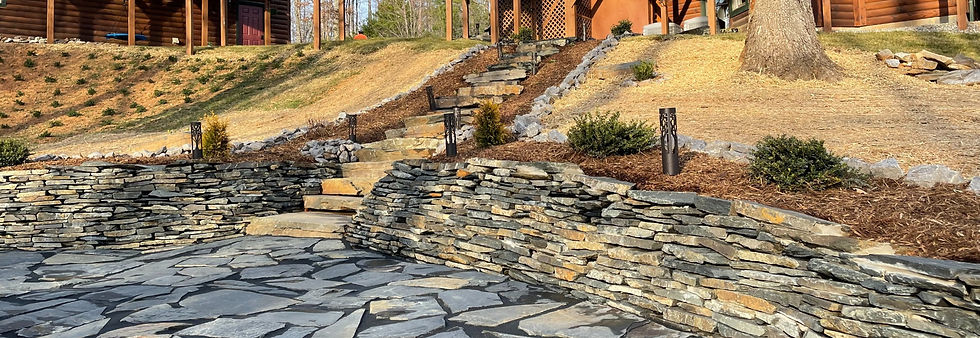
Creating a stunning outdoor space is not only about constructing patios and walkways and installing garden furniture. The real magic lies in designing the perfect landscape that incorporates the natural beauty of plants, flowers, and trees.
This is where softscaping comes into play. In this post, we'll explore softscaping, its techniques, and how you can implement it to create your dream garden. Plus, we'll answer some frequently asked questions to help you get started.
What is Softscaping?
Softscaping designs and enhances a landscape using living elements such as plants, trees, and shrubs. This approach focuses on harmony between various plant species, colors, textures, and heights to create a visually appealing, eco-friendly outdoor space. Softscaping can transform any garden, big or small, into a green paradise.
Softscaping vs. Hardscaping
While softscaping focuses on living landscaping elements, hardscaping involves using non-living elements like patios, walkways, retaining walls, and other hardscape features. Combining hardscape and softscape elements in your landscape design creates a balanced and functional outdoor space.
Softscaping Techniques to Beautify Your Garden
Choose the Right Plants: Select plants that thrive in your local climate and soil conditions. Consider each plant's maintenance requirements, growth patterns, and watering needs to ensure your garden remains healthy and vibrant. Opt for a mix of perennial plants, shrubs, and trees for a diverse landscape.
Create Layers: Plant taller trees and shrubs in the background while placing shorter plants and flowers in the foreground. This creates a sense of depth and makes your garden appear larger. Adding softscape elements like these can significantly enhance your front yard or backyard.
Play with Colors: Mix and match different colored flowers and foliage to create a lively and visually engaging landscape. Depending on your preferences, you can opt for a monochromatic theme or a vibrant color palette.
Add Texture: Incorporate plants with varying leaf shapes, sizes, and textures to create visual interest. Combine plants like ferns, ornamental grasses, and succulents for a dynamic landscape.
Incorporate Focal Points: Add focal points like sculptures, birdbaths, or an outdoor kitchen to your softscape landscaping design for a touch of elegance and whimsy.
Frequently Asked Questions (FAQs)
How do I start softscaping my garden? Begin by assessing your garden's size, climate, and soil conditions. Then, research suitable plants and create a design incorporating color, texture, and height variations. Consider planting trees and other softscaping elements to enhance the overall look of your landscape.
Can I do softscaping myself, or do I need to hire a professional? While it's possible to do softscaping yourself, hiring a professional landscape designer or gardener can ensure optimal plant selection and placement, ultimately creating a more cohesive and attractive outdoor space.
Embracing the Art of Softscaping: Create Your Dream Garden Oasis
Softscaping is the key to creating a lush, vibrant garden that showcases the natural beauty of plants, flowers, and trees. You can transform your outdoor area into a green paradise by incorporating the right plants, designing layered spaces, and playing with colors and textures. Don't be afraid to experiment; remember to enjoy creating your dream garden.
Combining hardscape elements like patios and retaining walls with softscape landscaping features can create a functional and attractive space for you and your family to enjoy. Adding softscape elements such as perennial plants, shrubs, and trees to your landscape design will enhance the visual appeal of your outdoor space and provide various benefits, including improved air quality, shade, and habitat for wildlife.
Whether starting from scratch or looking to revamp your existing garden, softscaping is an essential aspect of creating a beautiful and functional landscape. When selecting plants, consider factors like climate, soil conditions, and maintenance requirements. Feel free to seek advice from a professional if you need clarification on the best softscaping elements for your garden.
In conclusion, softscaping is vital to any well-designed landscape, providing a sense of harmony and balance with its living, breathing elements. By incorporating the right plants, textures, and colors, along with focal points like sculptures or an outdoor kitchen, you'll create a visually stunning outdoor space and a haven for relaxation and enjoyment. Happy gardening!


Comments